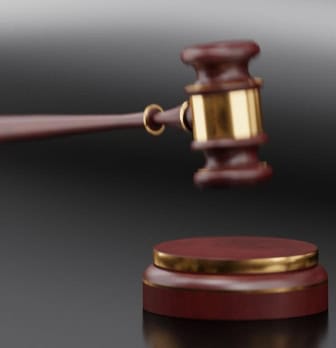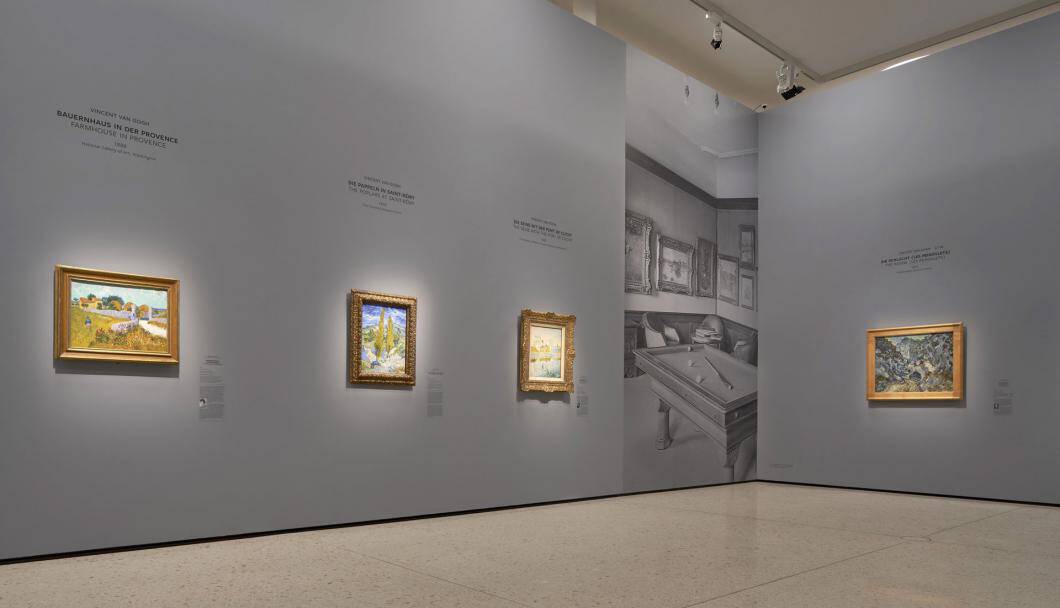Art appraisers play a vital role within the art industry, offering their expert assessments on the value, authenticity, and condition of artworks. Whether you are an art enthusiast, a practicing artist, or an individual seeking to sell or insure an artwork, it is imperative to locate a reputable and skilled art appraiser. This article aims to provide you with guidance on finding an art appraiser and shed light on essential factors to consider during your search.
What is an Art Appraiser?
Art appraisers are highly knowledgeable professionals who possess extensive expertise in evaluating the value and authenticity of artworks. They employ diverse methods and techniques to ascertain the fair market value of a particular piece, taking into account crucial factors such as the artist’s stature, provenance, condition, and prevailing market trends. The evaluation conducted by an art appraiser holds significant importance for insurance purposes, estate planning, philanthropic donations, art transactions, and other related matters.
Why is an Art Appraiser Important?
The expertise of an art appraiser is essential for several reasons:
Valuation
Art appraisers play a vital role in providing accurate and impartial assessments of an artwork’s value, taking into account various factors that impact its worth. These factors encompass:
- Historical Significance: Art appraisers thoroughly examine the artwork’s historical context and its significance within broader art movements or periods. They consider how the piece contributes to the artist’s overall body of work and its influence on the art world as a whole;
- Artistic Merit: Evaluating the quality and artistic merit of the artwork is crucial. Appraisers assess the craftsmanship, technique, and artistic skill demonstrated by the artist. They carefully analyze elements such as composition, color palette, and the overall aesthetic appeal of the piece;
- Condition: The physical condition of the artwork significantly affects its value. Appraisers meticulously inspect the artwork for any damage, deterioration, or indications of restoration. The better the condition, the higher the potential value of the artwork;
- Provenance: Provenance refers to the documented ownership history of the artwork. Appraisers delve into the lineage of the piece, tracing its ownership back to the artist or its initial appearance in the art market. Provenance helps establish authenticity and adds value to the artwork;
- Market Demand: Appraisers analyze current market trends and the demand for similar artworks. They review recent sales data, auction records, and fluctuations in the market. Factors such as the artist’s popularity, collector interest, and the overall climate of the art market influence the value of the artwork.
Insurance
Insurance companies heavily rely on professional art appraisals to accurately determine coverage and premiums for insuring valuable artworks. During the appraisal process, several crucial aspects come into play:
- Value Assessment: Appraisers meticulously evaluate the artwork to determine its current market value. They consider various factors such as the artist’s reputation, provenance, historical significance, and overall condition of the piece;
- Risk Evaluation: Appraisers also assess the associated risk of insuring the artwork. Factors taken into account include the artwork’s susceptibility to damage or theft, its display location, and any existing security measures in place;
- Documentation: Appraisers provide comprehensive documentation that supports their valuation. This documentation includes a detailed description of the artwork, high-quality photographs, and relevant supporting documents such as certificates of authenticity or provenance records;
- Expertise and Credentials: Insurance companies seek professional appraisers who possess expertise in the art market and hold appropriate credentials. They look for individuals with extensive knowledge of art history, valuation methodologies, and current market trends.
Sale and Acquisition
When it comes to buying or selling artwork, the evaluation conducted by an appraiser plays a vital role in ensuring fair transactions and informed decision-making. Here’s how appraisers contribute to the process:
- Determining Fair Market Value: Appraisers provide an unbiased assessment of the artwork’s fair market value. They consider various factors, including the artist’s reputation, the artwork’s condition, its provenance, and recent sales data. This evaluation helps establish a reasonable and objective price for the artwork;
- Assistance in Price Negotiations: Appraisers offer valuable support during price negotiations. Leveraging their expertise and knowledge of the art market, they provide insights into the artwork’s value and current market trends. This guidance enables buyers and sellers to negotiate with confidence and arrive at a fair price;
- Enabling Informed Decision-Making: An appraiser’s evaluation equips buyers and sellers with critical information necessary for making informed decisions. Sellers can accurately determine the appropriate asking price based on the artwork’s value, while buyers can assess whether the price aligns with the artwork’s worth. Appraisers also identify any potential risks or concerns associated with the artwork, empowering clients to make decisions based on reliable information;
- Conducting Due Diligence: Appraisers conduct thorough research and analysis as part of their evaluation process. They verify the authenticity of the artwork, review its ownership history, and assess its overall condition. This comprehensive due diligence ensures that buyers and sellers have accurate and trustworthy information about the artwork, reducing the risk of fraudulent transactions or misrepresentation;
- Bringing Professional Expertise: Appraisers bring specialized knowledge and expertise to the sale and acquisition process. They possess a deep understanding of art history, valuation methodologies, and the current art market. This expertise allows them to provide valuable insights and advice to clients, facilitating successful and well-informed transactions.
Estate Planning
Estate planning involves various aspects, and art appraisals play a significant role in this process, particularly in inheritance tax calculations and the equitable distribution of assets. Here’s how appraisers contribute to estate planning:
- Asset Valuation: Appraisers determine the value of art assets within an estate by carefully assessing each artwork’s fair market value. They consider factors such as the artist’s reputation, provenance, condition, and market demand to provide an accurate valuation;
- Inheritance Tax: Art appraisals are crucial for calculating inheritance taxes. Tax authorities require a comprehensive valuation of art assets to determine the tax liability. Appraisers’ evaluations serve as crucial evidence of the artworks’ worth, ensuring precise and fair tax calculations in adherence to applicable laws and regulations;
- Equitable Distribution: Appraisals assist in the equitable distribution of art assets among beneficiaries. Estate planners and executors rely on the appraiser’s valuation to determine the fair division of artworks or create a plan that takes into account the preferences of the beneficiaries. This ensures a balanced and fair distribution of art assets;
- Documentation and Record Keeping: Appraisers provide detailed documentation of their evaluations, including comprehensive descriptions, high-quality photographs, and valuation reports. These records serve as essential evidence in estate planning and help maintain accurate documentation for future reference;
- Expertise in Estate and Tax Regulations: Appraisers possess specialized knowledge of estate and tax regulations pertaining to art assets. They stay up-to-date with changes in laws and guidelines to provide accurate appraisals that comply with legal requirements and ensure proper handling of art assets within estate planning.
Authenticity
Art appraisers play a crucial role in verifying the authenticity of artworks and detecting any forgeries or reproductions. Here’s how they contribute to ensuring authenticity:
- Art Historical Knowledge: Appraisers possess extensive knowledge of art history, including the styles, techniques, and materials used by various artists and art movements. This knowledge enables them to assess the authenticity of artworks based on their alignment with the artist’s known body of work;
- Provenance Research: Appraisers conduct thorough research on the artwork’s provenance, which involves tracing its ownership history and associated documentation. They examine historical records, exhibition catalogs, and sales records to establish a documented chain of ownership that can verify the artwork’s authenticity;
- Technical Analysis: Appraisers may employ various technical methods to analyze the artwork in question. They study the materials used, examine the brushwork or other techniques employed, and sometimes utilize scientific analyses such as infrared imaging or pigment analysis. These technical analyses provide additional evidence to support the authenticity assessment;
- Collaboration with Experts: Appraisers often collaborate with a network of experts, including art historians, conservators, and scientists, to validate the authenticity of artworks. By leveraging the expertise of these specialists, appraisers can gather additional insights and opinions to support their authenticity evaluations;
- Familiarity with Forgeries: Appraisers stay informed about known forgeries or reproductions associated with specific artists or periods. They study past cases and reference materials to familiarize themselves with telltale signs of fraudulent works. This knowledge helps them identify any red flags or inconsistencies that may indicate the presence of a forgery.
Factors to Consider When Finding an Art Appraiser
When searching for an art appraiser, consider the following factors to ensure you find the right professional for your specific needs:
Experience and Qualifications
When seeking art appraisers, consider the following criteria to ensure you find the most qualified professionals:
- Specialization: Seek appraisers with expertise in the type of artwork you want to appraise, whether it’s contemporary art, classical paintings, sculptures, or other mediums;
- Education: Look for appraisers who possess formal education in art history, appraisal studies, or a related field. A strong educational background equips them with the necessary knowledge to accurately assess the authenticity, condition, historical context, and value of the artwork;
- Certifications: Consider appraisers who hold certifications from recognized appraisal organizations such as the International Society of Appraisers (ISA) or the Appraisers Association of America (AAA). These certifications indicate a higher level of expertise and adherence to professional standards;
- Professional Affiliations: Check if the appraiser is a member of professional art appraisal associations or societies such as the American Society of Appraisers (ASA) or the Royal Institution of Chartered Surveyors (RICS). Membership in reputable organizations demonstrates their commitment to upholding ethical standards and staying updated with industry trends.
Specialization
When searching for an appraiser to evaluate your artwork or collection, consider the following points regarding specialization:
- Art Periods: Some appraisers focus their expertise on specific art periods, such as Renaissance, Impressionism, or Contemporary Art. If you possess artwork from a particular period, it is beneficial to find an appraiser who specializes in that era;
- Mediums: Different mediums, such as paintings, sculptures, photography, or ceramics, require unique skill sets and knowledge for an accurate appraisal. Look for appraisers who have specialized experience in assessing the specific medium of your artwork;
- Types of Artwork: Appraisers may specialize in certain types of artwork, such as prints, textiles, tribal art, or decorative art. If your collection primarily consists of a specific type, finding an appraiser who specializes in that area can offer a deeper understanding of its historical, cultural, and market significance.
Reputation and Reviews
When considering art appraisers, it’s essential to assess their reputation and credibility. Here are some steps you can take to ensure you select a reputable appraiser:
- Research Background: Conduct thorough research on the appraiser’s background, including their education, professional experience, and affiliations with reputable organizations. Look for information that highlights their expertise, track record, and commitment to maintaining ethical standards in the field of art appraisal;
- Testimonials and References: Seek testimonials or references from previous clients who have worked with the appraiser. These firsthand accounts can provide valuable insights into the quality of their services, professionalism, and accuracy of their appraisals;
- Online Platforms: Utilize online platforms to gather information about the appraiser’s reputation. Websites like Google Reviews, Yelp, or specialized art-related platforms allow individuals to provide feedback and ratings based on their interactions with the appraiser;
- Professional Networks: Engage with art communities, forums, or online groups to seek recommendations or opinions about reputable appraisers. These networks often have knowledgeable members who can provide valuable insights or personal experiences with different appraisers.
Appraisal Methods
When engaging an art appraiser, it’s crucial to inquire about the methods they employ for the appraisal process. Here are some key considerations regarding appraisal methods:
- Recognized Methods: Reliable appraisers adhere to recognized and accepted methods that comply with industry standards. These methods ensure transparency, consistency, and accuracy in the valuation process;
- Comparative Sales Analysis: One commonly used method is comparative sales analysis. Appraisers examine recent sales of comparable artworks to determine a fair market value for the piece being appraised. This method relies on researching and analyzing sales data of similar artworks in terms of artist, style, medium, condition, and provenance;
- Research-Based Valuation: Appraisers often conduct extensive research on the artwork to assess its historical significance, cultural context, provenance, and condition. They may delve into art historical references, auction records, exhibition history, and literature related to the artist or artwork;
- Consultation with Experts: Appraisers may consult with experts specializing in the specific field or subject matter of the artwork under evaluation. These experts can provide additional insights, expertise, and opinions that contribute to a well-rounded appraisal.
Confidentiality and Ethics
Ensure that the appraiser adheres to strict confidentiality and ethical standards. Art appraisers should prioritize the privacy and security of their clients’ information and maintain objectivity and impartiality in their evaluations.
Researching Art Appraisers
To begin your search for an art appraiser, consider the following research avenues:
Online Directories and Databases
Several online directories and databases specialize in listing art appraisers. Websites like the American Society of Appraisers (ASA), the Appraisers Association of America, or the ISA provide search functionalities to find appraisers based on location, specialization, or certification.
Art Organizations and Associations
Art organizations and associations often maintain directories of their members, including certified appraisers. Examples include the Art Dealers Association of America (ADAA), the American Society of Appraisers, and the Appraisers Association of America.
Local Galleries and Museums
Reach out to local galleries, museums, or art institutions in your area. They can often provide recommendations or refer you to reliable appraisers they have worked with in the past.
Recommendations and Referrals
Ask for recommendations from art collectors, artists, or individuals who have previously engaged art appraisers. Personal referrals can be valuable as they are based on first-hand experiences.
Internet Search
Conduct a targeted internet search using relevant keywords and your location to find appraisers near you. Explore websites, portfolios, and online reviews to gather information about potential appraisers.
Evaluating Art Appraisers
Once you have compiled a list of potential art appraisers, it’s essential to evaluate them thoroughly before making your final choice. Consider the following steps:
Initial Contact and Communication
Initiate contact with the appraisers on your list and assess their responsiveness, professionalism, and willingness to answer your initial questions. Prompt and clear communication is indicative of a reliable appraiser.
Portfolio and Sample Appraisals
Request to see examples of the appraiser’s previous work, including sample appraisals. This allows you to assess the quality and depth of their evaluations and determine if their style aligns with your expectations.
Interviewing Appraisers
Set up interviews or consultations with the appraisers who passed your initial evaluation. Use this opportunity to ask specific questions about their experience, qualifications, appraisal methods, and approach to ensure they meet your requirements.
Fee Structure and Cost Estimates
Discuss the appraiser’s fee structure and obtain a clear understanding of their charges. Art appraisal fees are typically based on factors such as the complexity of the artwork, the time involved, and the purpose of the appraisal. Ask for an estimated cost and evaluate it in relation to your budget.
Making the Right Choice
After conducting thorough research and evaluations, it’s time to make your choice. Consider the following aspects:
| Criteria | Comparing Appraisers |
|---|---|
| Qualifications | Review notes, portfolios, and communications with each appraiser to assess their qualifications and expertise. |
| Expertise | Evaluate the appraisers’ expertise in relation to your specific needs and requirements. |
| Fit for specific needs | Determine which appraiser best aligns with your specific needs and offers the highest level of professionalism. |
| Trust and comfort | Trust your instincts and choose an appraiser with whom you feel comfortable and confident. |
| Communication | Consider the appraiser’s ability to engage in open and transparent communication throughout the appraisal process. |
| Working relationship | Ensure that you can establish a positive working relationship with the chosen appraiser. |
| Agreements and contracts | Before proceeding with the appraisal, obtain a written agreement or contract that clearly outlines the appraisal’s scope, time frame, fees, and the responsibilities of both parties. |
| Terms and conditions | Gain a clear understanding of the terms and conditions associated with the appraisal. |
Conclusion
Finding an art appraiser may seem daunting, but with proper research and evaluation, you can locate a qualified professional who meets your specific needs. Consider their experience, specialization, reputation, and appraisal methods. Take advantage of online directories, recommendations, and interviews to make an informed decision. By following these guidelines, you can ensure a reliable and accurate appraisal of your valuable artwork.





